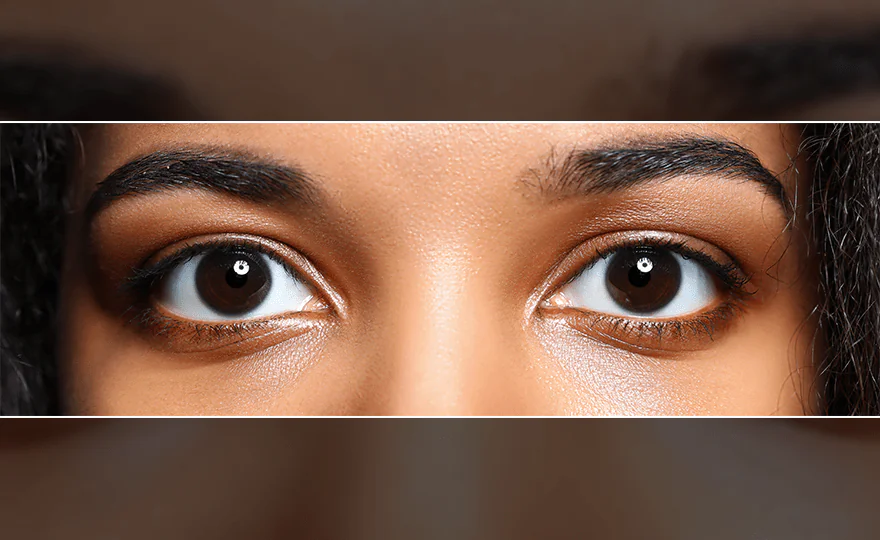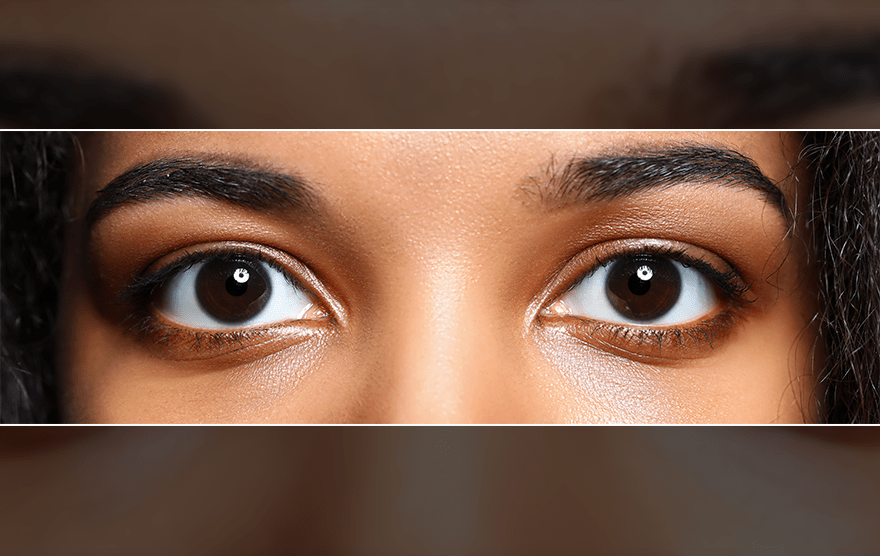
Types of Refractive Errors For Eyes

If you have ever observed something through a microscope or a telescope, you must have noticed that with even a slight change in focus, how blurry the subject gets. The human eyes work on a similar principle; light enters your eyes > it gets refracted > and finally the retina receives the light > you become able to see. A slight change in the refraction through your eyes could lead to refractive errors or in commonly referred to as eyesight problems.
What is Refractive Errors For Eyes
Certain abnormalities with the shape of your eyes could lead to refractive errors for eye causing blurry vision, hazy vision, double vision, headaches, eye strain, or other issues. Refractive errors may develop over-time in adults or children. Mild refractive errors hardly troubles people; however, severe errors could require a vision correction. You may have it on both of your eyes or on a single eye or may have different errors on both eyes.
Whatever be the issue with your eyesight, do remember that vision correction is feasible and simple. Also, do not feel left out because refractive errors for eyes are very common; approximately more than 2.3 billion people suffer from it.
Different Types of Refractive Errors for Eyes
Refractive errors are common vision problems that occur when the shape of the eye prevents light from focusing directly on the retina. The most common types of refractive errors include myopia (nearsightedness), hyperopia (farsightedness), astigmatism, and presbyopia.
Myopia (Nearsightedness): Causes And Correction
Myopia is one of the common types of refractive errors that affects your ability to see distant objects. Although the near objects can be seen clear and sharp, distant objects appear blurry.
- Cause: It occurs when the eyeball is too long or the cornea has too much curvature. As a result, light entering the eye focuses in front of the retina instead of directly on it.
- Symptoms: Individuals with myopia refractive error can see close objects clearly but distant objects appear blurry.
- Correction: Corrective lenses (glasses or contact lenses) are commonly used to bend light properly and focus it on the retina. Refractive surgery, such as LASIK, is another option to reshape the cornea and correct myopia.
Hyperopia (Farsightedness): Causes And Correction
This is a type of refractive error where people with this condition can clearly see faraway objects; however, they face difficulty seeing near objects. If the condition is significant, it can affect overall vision.
- Cause: Hyperopia is caused by an eyeball that is too short or a cornea with too little curvature. As a result, light entering the eye focuses behind the retina.
- Symptoms: Individuals with hyperopia refractive errors can see distant objects more clearly than close ones.
- Correction: Like myopia, corrective lenses (glasses or contact lenses) are used to adjust the way light enters the eye. Refractive surgery can also be an option for hyperopia.
Astigmatism: Causes And Correction
This is another one of the major types of refractive errors that affects both near and far eyesight. When light enters astigmatic eyes, it focuses on multiple points instead of directly on the Retina. This usually happens because of the mismatch in the curvature of the cornea or the lens. If the curve is shaped like an egg or irregularly shaped instead of being shaped like a sphere, it will cause blurry vision at all distances.
- Cause: Astigmatism is a condition where the cornea or lens has an irregular shape.
- Symptoms: Blurred or distorted vision at any distance, along with eye discomfort or headaches.
- Correction: Corrective cylindrical glasses or toric lenses can help compensate for the irregular shape of the cornea or lens. Refractive surgery may also be an option.
Presbyopia: Causes And Correction
After 40-45 years of age, people usually begin facing this type of refractive error. With age, the lens in the eyes starts getting hard and less flexible, making it difficult to focus, especially on nearby objects.
- Cause: Presbyopia is an age-related condition that occurs as the natural lens in the eye loses flexibility, making it difficult to focus on close objects.
- Symptoms: Difficulty reading or performing close-up tasks, particularly in low-light conditions.
- Correction: Reading glasses, bifocals, or progressive lenses are commonly used to address presbyopia. Refractive surgery options, such as monovision LASIK, may also be considered.
It’s important to note that regular eye checkups are crucial for detecting and correcting refractive errors. An eye care professional can assess vision and recommend appropriate corrective measures based on the specific refractive error for eyes.
Read about myopia vs hyperopia vs astigmatism in detail here.
Diagnosing Refractive Errors for Eyes
Diagnosing refractive errors for eyes involves a comprehensive assessment of the eye’s ability to focus light properly onto the retina. Optometrists and ophthalmologists employ various techniques to identify it. The most common diagnostic tool is the phoropter, a device that allows practitioners to determine the ideal prescription by adjusting lenses and assessing visual acuity. Additionally, eye charts, like the Snellen chart, help assess visual acuity at different distances. Through a combination of these methods, eye care professionals can accurately diagnose refractive errors and prescribe corrective measures such as glasses or contact lenses or refractive surgery to enhance visual clarity and alleviate associated symptoms.
Treatments to Correct Refractive Errors in Eyes
A consultation with eye-specialists will not only help you with quick diagnosis of the type of refractive errors but also treatment. Some of the common treatments for it are:
-
Eye Glasses:
Most people opt for glasses. Based on the type of refractive error and the severity, your doctor will prescribe lenses for best visual clarity.
-
Contact Lenses:
Contact lenses work exactly as eyeglasses, but with the comfort of not carrying the glass frame around. These lenses sit on your eyes’ surfaces and help the entering light directly focus on the retina. Some people find it easy to wear and carry contact lenses because eyeglasses can limit certain physical activities.
-
Refractive Procedures:
To correct the refractive errors for eye, you can opt for laser-based eye surgery, like SILK, SMILE, LASIK, Contoura Vision, and PRK. These procedures are fast and precise, and once the procedure is done, you will be able to see perfectly in no time and bid goodbye to your eyeglasses or contact lenses.
Are you facing issues with your vision? Make sure to consult an experienced eye-specialist and get it diagnosed. Prescription glasses or lenses will definitely help you with your vision problem. However, if you do not wish to go through the hassle of wearing lenses or eyeglasses, consult the world-class team of doctors at Planet Lasik and get proper consultation on how to live a spec-free life!
Refractive Errors for Eyes – FAQs
-
What causes these refractive errors?
Refractive errors arise from variations in eye shape, causing myopia (long eyeball, distant blurriness), hyperopia (short eyeball, close blurriness), astigmatism (cornea/lens irregularities), and presbyopia (age-related lens stiffening affecting close-up focus).
-
How are refractive errors diagnosed?
Refractive errors are diagnosed through comprehensive eye examinations using tools like phoropters, autorefractors, and eye charts.Eye care professionals determine the precise prescription for corrective measures like glasses or contact lenses.
-
What lifestyle changes can I make to maintain healthy eyes and minimize refractive errors?
To maintain healthy eyes and reduce refractive errors, adopt practices like regular eye breaks during screen use, a balanced diet rich in eye-friendly nutrients, and protective measures against UV exposure, such as sunglasses.
-
Are surgical treatments like LASIK suitable for everyone with refractive errors?
LASIK may not be suitable for everyone with refractive errors. Factors such as corneal thickness, eye health, and certain medical conditions may limit eligibility. Consultation with an eye care professional is essential to determine appropriate surgical treatments for individual cases.
